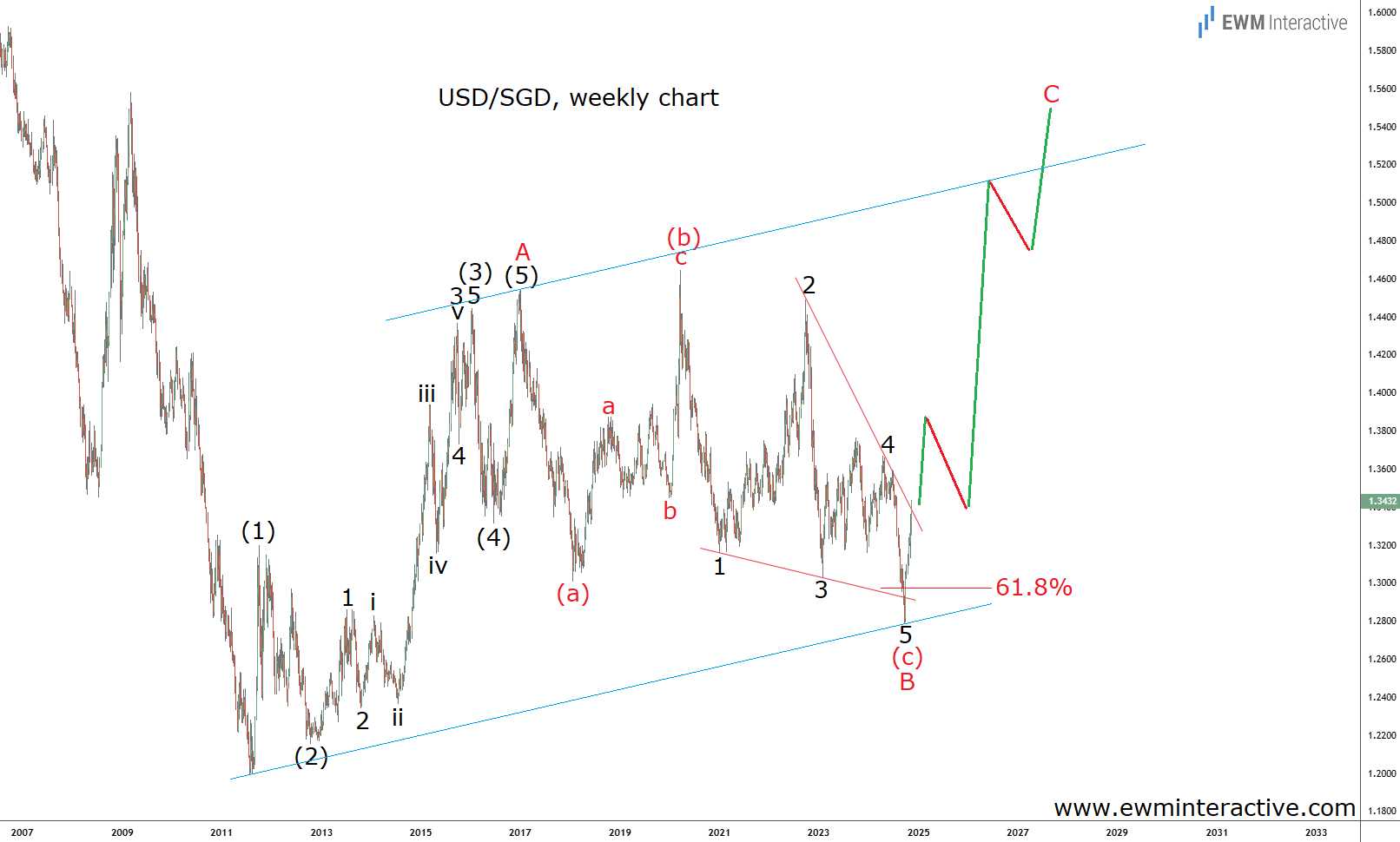The Singapore Dollar has been one of the few currencies, especially among the Asian ones, which managed to hold their ground against the US dollar in the years after the 2008 Financial Crisis. USD/SGD rose to nearly 1.5600 in 2009, before briefly tumbling below 1.2000 in 2011. The pair has been locked between 1.3000 and 1.4600 for a decade now and currently trades near 1.3450. According to the Elliott Wave chart below, however, it might soon break the upper boundary of that range.
The weekly chart of USD/SGD shows that the recovery from the 2011 bottom up to 1.4546 in 2017 is a five-wave impulse. We’ve labeled the pattern (1)-(2)-(3)-(4)-(5), where two lower degrees of the trend are also visible within the structure of wave (3). That impulse was followed by an (a)-(b)-(c) expanding flat correction. Wave (b) is a simple a-b-c zigzag to a new high, while wave (c) is an ending diagonal, marked 1-2-3-4-5.
It looks like waves A and B are in place already. According to the theory, we can expect USD/SGD to head in the direction of the impulse sequence going forward. The sharp bullish reversal from the 61.8% Fibonacci support level indicates that wave C up has already begun. If this count is correct, upside targets in the 2009 resistance area between 1.5000 and 1.5500 make sense. The next couple of years are likely to be tough for Singapore dollar bulls.
Which stock should you buy in your very next trade?
AI computing powers are changing the stock market. Investing.com's ProPicks AI includes 6 winning stock portfolios chosen by our advanced AI. In 2024 alone, ProPicks AI identified 2 stocks that surged over 150%, 4 additional stocks that leaped over 30%, and 3 more that climbed over 25%. Which stock will be the next to soar?
Unlock ProPicks AI